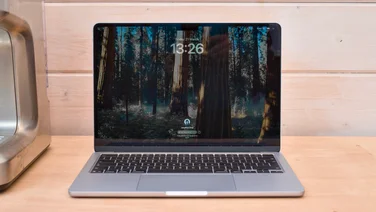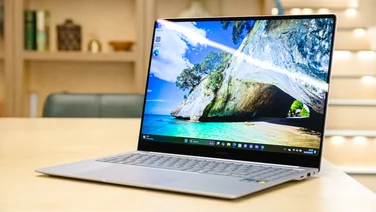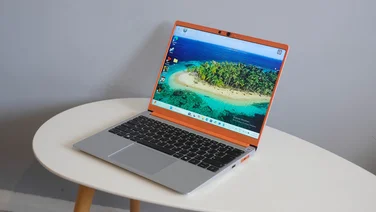To help us provide you with free impartial advice, we may earn a commission if you buy through links on our site. Learn more





HP may be a little late to the Ultrabook market, but the company has made a big splash with the Envy 14 Spectre – it’s a stunning looking machine that’s built from scratch-resistant aluminium with Gorilla Glass for the display as well as on top of the lid and the touchpad. The glass helps make the Spectre, at 1.8kg, one of the heavier Ultrabooks we’ve seen, but it certainly makes the laptop stand out even among other Ultrabooks.

The great design continues underneath, with an aluminium chassis, glass wrist rest and black Chiclet-style keyboard. It reminds us of the MacBook Pro, particularly the HP logo on the lid that glows white when the system powers on, but there’s one area where it even outclasses Apple’s laptops; the screen.
The Spectre’s 14in Radiance Display LED screen is simply outstanding, making it the best screen we’ve seen on any Ultrabook to date. The 1,600 x 900-pixel panel has vibrant colours, excellent contrast and incredible brightness, and outclasses that of our current favourite, the Asus ZenBook UX31. Horizontal viewing angles are wide and there’s ample screen tilt, so you should have no trouble finding a comfortable working position. Despite having a glossy finish, the screen doesn’t suffer too much from reflections.

Despite the Beats Audio branding, audio quality from the laptop’s speakers was barely any better than that of other Ultrabooks we’ve seen. Bass was still lacking even after adjusting the equalizer presets, but overall sound quality was clear enough for web-based video. Dedicated buttons on the side of the chassis enable Beats Audio and mute the system. There’s also a volume dial, but oddly you have to roll it towards you to increase the volume, which seems the reverse of what we were expecting.
The Spectre isn’t the thinnest Ultrabook around, but at 20mm thick there’s ample room for a good selection of ports. As well as one USB3, one regular USB, a combined headphone and microphone audio jack, multi-format card reader and full-size Ethernet, the Spectre is also one of the first laptops we’ve seen with a Near field communication (NFC) reader, which will be useful to transfer information from devices such as NFC-enabled smartphones.

In terms of performance, the Spectre is fairly middle of the road – with a dual-core Intel i5-2467m processor running at 1.6GHz with Turbo Boost up to 2.3GHz, 4GB RAM and a 128GB SSD. It managed 41 overall in our multimedia benchmarks, so you should be able to run almost any everyday task without complaint, although more intense tasks and running several applications at once might push the system. Battery life is excellent – in our light-use test, the Spectre managed over eight hours away from the mains. This puts it ahead of all the other Ultrabooks we’ve seen so far, and is second only to the MacBook Air in the ultraportable category – only netbooks last longer, and they’re far less powerful.
The Spectre doesn’t have a discrete graphics chipset, and instead relies on its processor’s integrated graphics. It’s easily able to handle high definition video, either at 720p on the laptop screen or 1080p on an external display using the HDMI or Mini DisplayPort outputs, but you’ll struggle to play modern games on it. In our Dirt 3 test, it could only manage a jerky 13.6fps, proving you’ll need to lower your expectations as well as your detail settings to get a playable frame rate.
We had no trouble typing on the LED backlit keyboard, which has firm yet springy keys spaced comfortably apart. Almost all the punctuation keys were in the right places, with just the arrow keys cramped into the corner of the keyboard tray. The function keys are set to multimedia shortcuts by default and you have to press the fn modifier key to use them normally, but you can change this behaviour in the BIOS if you prefer.

The large glass touchpad is well-matched to the 16:9 screen, with minimal friction to make moving the mouse cursor around the desktop a breeze. It also works incredibly well with multi-touch gestures, but the integrated buttons are a real let-down. They are stiff and difficult to press down at the edge because they are completely surrounded by the glass wrist rest. This isn’t enough to spoil the experience of using the Spectre, but it’s definitely frustrating in an otherwise very good laptop.
With its unique design, fantastic screen and surprisingly good software bundle, including full versions of Adobe Photoshop Elements and Premiere Elements, the Spectre looks great on the surface, but dig a little deeper and it doesn’t look like great value. It’s significantly more expensive than the competition, including the Asus ZenBook UX31, which weighs less and has a faster processor. The Spectre is a great-looking laptop with a superb screen, but the UX31 remains our favourite Ultrabook.






